What Type of Beef Is Made Up of Three Different Muscles Flow
Understanding the Science Behind Meat Composition
Meat is defined by the Codex Alimentarius as "all parts of an animal that are intended for, or have been judged as safe and suitable for human consumption," and is comprised of three major components: muscle cells, connective tissue, and fat.
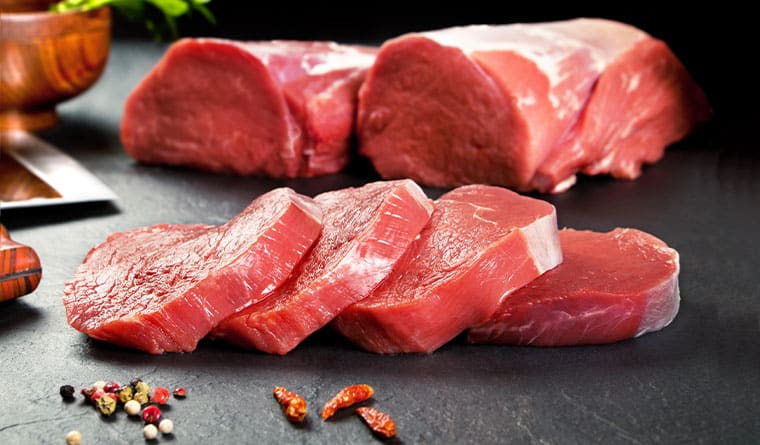
In this article, we'll go over the composition of meat, its major components, and how these affect its overall structure.
What is Meat Made of?
Meat is composed of protein, fat, connective tissue, and exudate–its natural "juice." Interestingly, on average, its muscle mass could contain anywhere from 35 to 60% of the animal's total body weight .
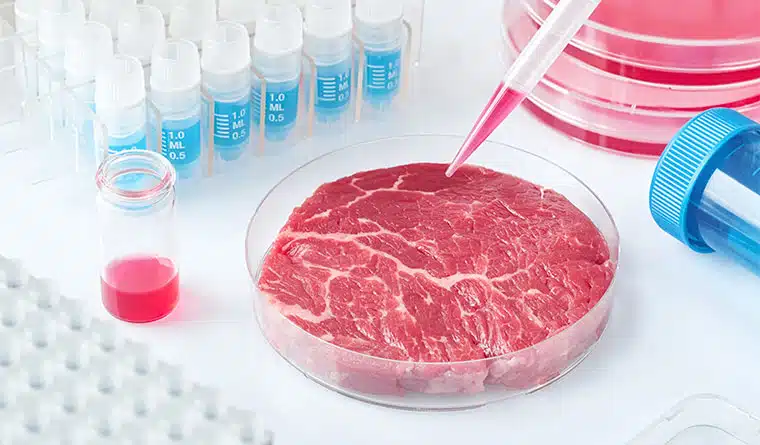
The Chemical Composition of Meat
Animal muscle tissue includes water, amino acids, carbohydrates, minerals, vitamins, and flesh, but the edible parts are mainly its muscle tissue. Meat muscle is made out of fibers that are bundled together with connective tissue. Muscle fibers, also known as myofibrils, contain filaments arranged in a repetitive pattern alongside the other myofibrils.
Muscle Fiber Composition
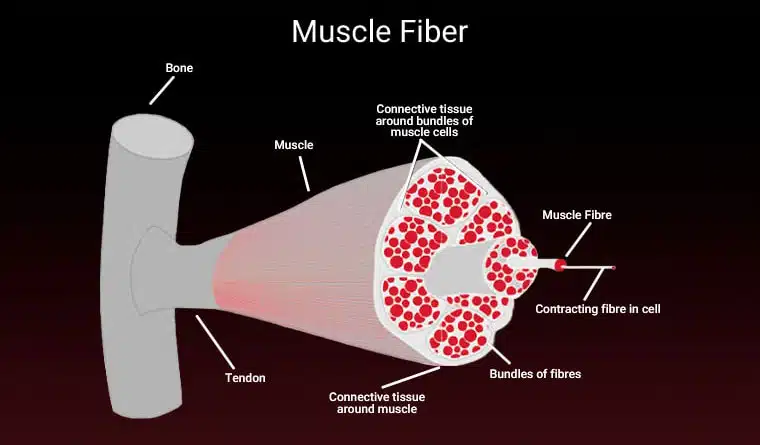
Muscle fibers, found inside the muscle, are grouped in bundles and are linked through the connective tissue.
What Affects the Composition of Meat?
There are internal and external factors that can affect the structure and chemical composition of meat, ranging from an animal's breed or species to its gender, age, or diet.
Internal Factors
Fats and oils, known as Lipids, can influence meat's flavor, juiciness, tenderness, and caloric content, but might also cause variations in the meat's muscle fibers. Thin, short fibers result in more tender meat, while thick, long fibers result in firmer meat.
Let's examine some popular cuts of meat: beef, pork, and lamb. Ribeye steaks, pork chops, and lamb loin are all examples of tender cuts with thin, short muscle fibers. Meanwhile, beef flanks, pork belly, and lamb breast are examples of tough cuts with long, thick muscle fibers.
External Factors
External factors such as an animal's diet and feeding regime can dramatically affect its meat's composition and metabolic properties. These result in a range of quality and types of meat cuts found around the world.
Environmental factors, including pollutants, chemical residues, and climate, also have a direct impact on the structure of meat, its tenderness, health value, and ultimately, quality.
How Does Muscle Turn Into Meat?
We've covered the structure of meat as well as the chemical composition of its muscle tissue. However, for meat to become fit for consumption, the animal's muscle has to go through a series of processes.
Once slaughtered, the animal's blood circulation ceases, and its heart stops beating. Since blood helps bring oxygen to the muscles and push waste products away from them, this means that the muscle can no longer use oxygen. Once all the oxygen is depleted, the way in which the muscle breaks down energy changes, and begins to produce lactic acid instead. As lactic acid builds up, pH levels decline.
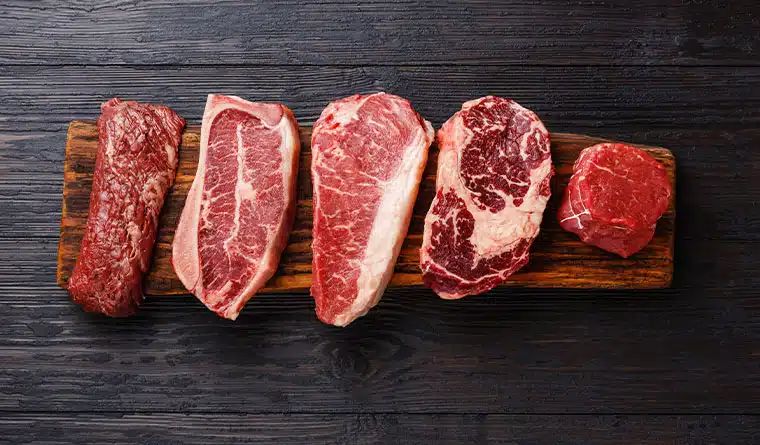
The acid that's built up in the muscle then causes calcium to be released into the muscle, making it contract. The remaining energy in the muscle is then used to help it relax.
This process repeats itself as more calcium is pumped into the muscle, until all of its energy is exhausted, making it constantly contract without the ability to relax.
This process can take anywhere from a couple of hours to as long as a day, with the end result being a permanent contraction state, famously known as rigor mortis, meaning postmortem rigidity.
So, how does this complex process affect the meat we eat?
While a live muscle has a neutral pH of around 7, the final pH of raw meat is around 5.5–which is more acidic than live muscle. This acidic pH level is responsible for the unique flavors we associate with meat, which are extremely hard to replicate.
The Structure of Vegan Meat
Whether it's for environmental, health, or ethical reasons, some people opt for vegan or alternative meat products. Vegan meat, or alternative meat, is usually made out of plant-based ingredients such as plant protein from peas or soy from soybeans .
The last few years have seen a variety of "alternative meat" products introduced to the market, which use plant-based ingredients to create flavors and textures similar to traditional meat.
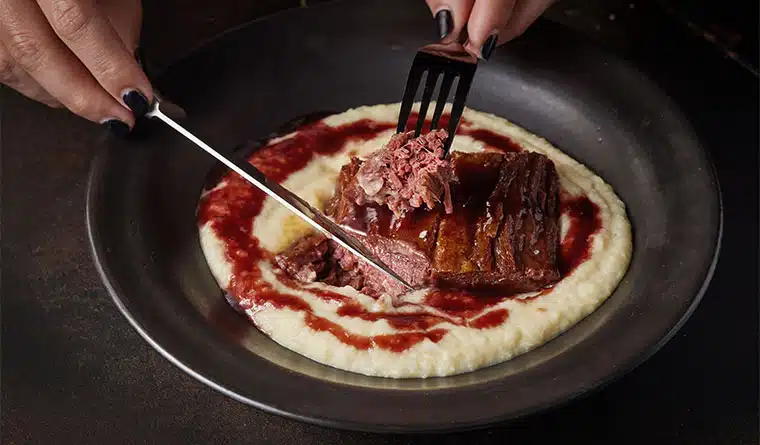
Redefine Beef Flank
Until recently, plant-based meat remained several steps behind traditional meat in terms of its eating experience. This challenge inspired the creation of New-Meat™, as we sought to replicate the full sensory experience of traditional meat, without compromise. Alongside top food scientists, butchers, and meat experts, we embarked on a mission to make a new kind of meat. Using advanced technologies such as artificial intelligence, material science, and additive manufacturing, also known as 3D printing, we created New-Meat™ that's better for the environment and kind to animals.
Today, our variety of New-Meat™ products are available at a growing number of leading restaurants, hotels, and foodservice partners. This is great news for anyone looking to reduce their animal meat intake, without giving up on great food and great taste.
FAQs
What is the structure of meat?
The edible parts of animal flesh are mainly its muscle tissue. The structure of meat muscle is made out of fibers that are bundled together with connective tissue.
What is meat made of?
The structure of meat is mostly composed of an animal's muscle tissue, which is made up of three major components: muscle cells, connective tissue, and fat.
The meat we consume today is mostly made up of animal muscles that have gone through a conversion process that begins once an animal is killed, which ultimately causes its muscle to remain in a constant rigid position named rigor mortis.
What is the chemical composition of meat?
Meat is majorly composed of animal muscle tissue. Muscles are made of bundles of cells called fibers. There are internal and external environmental factors that affect the quality of the meat we consume.
What is Vegan Meat made out of?
Vegan meat, also known as alternative meat, is made out of plant-based ingredients and proteins that are produced in a multitude of ways to mimic the complex flavors and textures of animal meat.
Source: https://www.redefinemeat.com/blog/structure-of-meat/
0 Response to "What Type of Beef Is Made Up of Three Different Muscles Flow"
Post a Comment